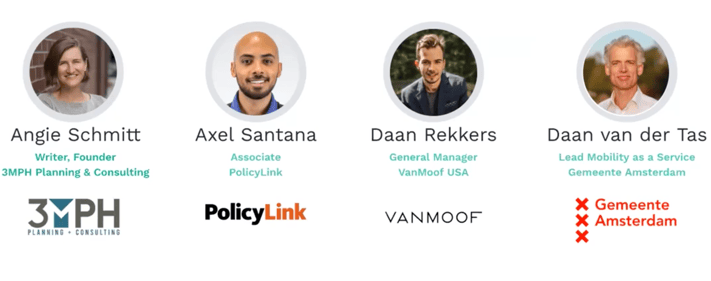
These days, there are more mobility options than ever, and the speed of innovation for new vehicle types is only getting faster. On January 25, Ride Report hosted a webinar on considerations for managing the rapidly evolving ecosystem.
The current state of affairs
Mobility innovation has exploded in recent years, with shared scooters, e-bikes, one-wheels, e-mopeds, and robo-taxis traveling along streets and sidewalks. The sale of e-bikes has surpassed the sale of electric cars in the US and more and more people are turning to alternatives to driving where these options are available (Bloomberg). Equally as innovative is the management of shared mobility programs (particularly micromobility) at the municipal level, including data driven management. For a variety of reasons, these innovations in data sharing and municipal management are yet to be applied to private bicycles and scooters, but new vehicles that don’t fit neatly into categories are raising questions about how regulations could evolve.
VanMoof USA and the Model V
Daan Rekkers, General Manager of VanMoof USA, kicked the webinar off with a discussion about their newest e-bike, the VanMoof V. Unlike other e-bikes from VanMoof, the V is able to reach higher speeds (31 mph), meaning it can function as a bicycle in some contexts, using traditional bike infrastructure at slower speeds, while operating more like a street legal moped as its speed increases.
Vehicle form factor
Angie Schmitt, author and founder of 3MPH Planning and Consulting, talked more broadly about transportation safety, highlighting that large and fast vehicles such as cars and oversized SUVs cause many more pedestrian injuries and fatalities than slower and lighter micromobility vehicles. Many shared mobility programs in the United States require speed governors on vehicles, coupled with geofenced zones, ensuring desired speeds on their streets and sidewalks. However, similar restrictions are rarely considered and much less implemented for cars and trucks. Schmitt explored some of the exciting opportunities for enhancing safety.
A view from the Netherlands
Daan van der Tas, Mobility as a Service Lead of the City of Amsterdam, discussed his work towards Amsterdam’s goal to become a car free city. Van der Tas noted that cars take up a lot of space compared to other forms of transport, so it is crucial for a city like Amsterdam to maximize use of the right of way to encourage efficient and safe forms of transportation. Bikes are the predominant vehicle used to get around the city, and e-bikes are becoming increasingly popular. Not every e-bike is complying with regulations when it comes to speed limits, so the City is seeking new ways to educate and influence behavior.
Community and mobility justice
Axel Santana, associate of PolicyLink, talked about the importance of acknowledging how innovation and policies have marginalized low-income communities and communities of color along with the need to repair the damage done. Santana notes that including communities in the planning of new policies and technologies is crucial for making a lasting beneficial impact. Santana's three takeaways were to listen to community needs, increase the capacity of city staff to engage with all communities, and provide transparency in funding and how it is being spent equitably.
View for yourself
Each of our panelists brought their own perspectives on what should be considered when regulating streets. The discussion converged on the need to include voices from all involved parties - city staff, advocates, private entities, and community members. Only when we include all stakeholders can we reach policy decisions that have a lasting positive impact.
Watch the webinar and let us know what you think.
